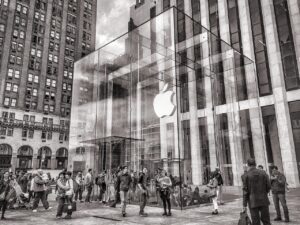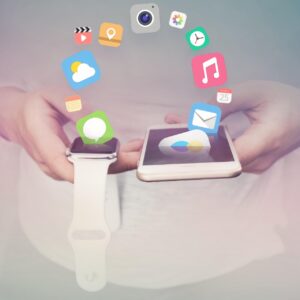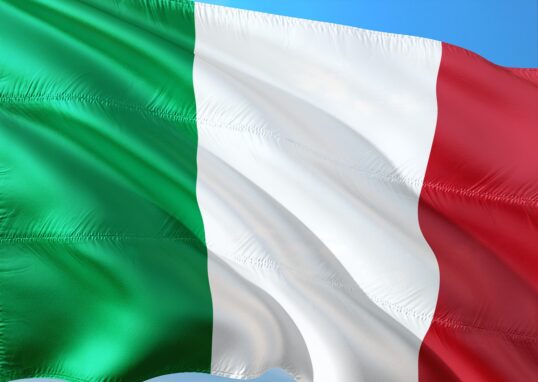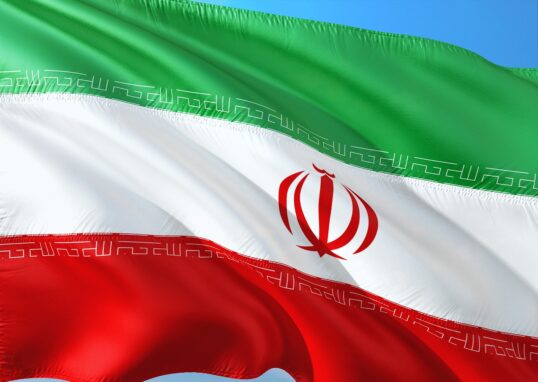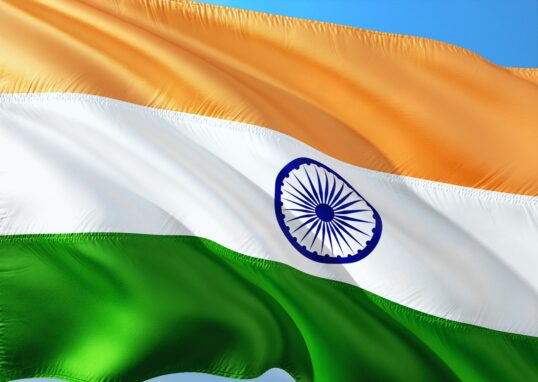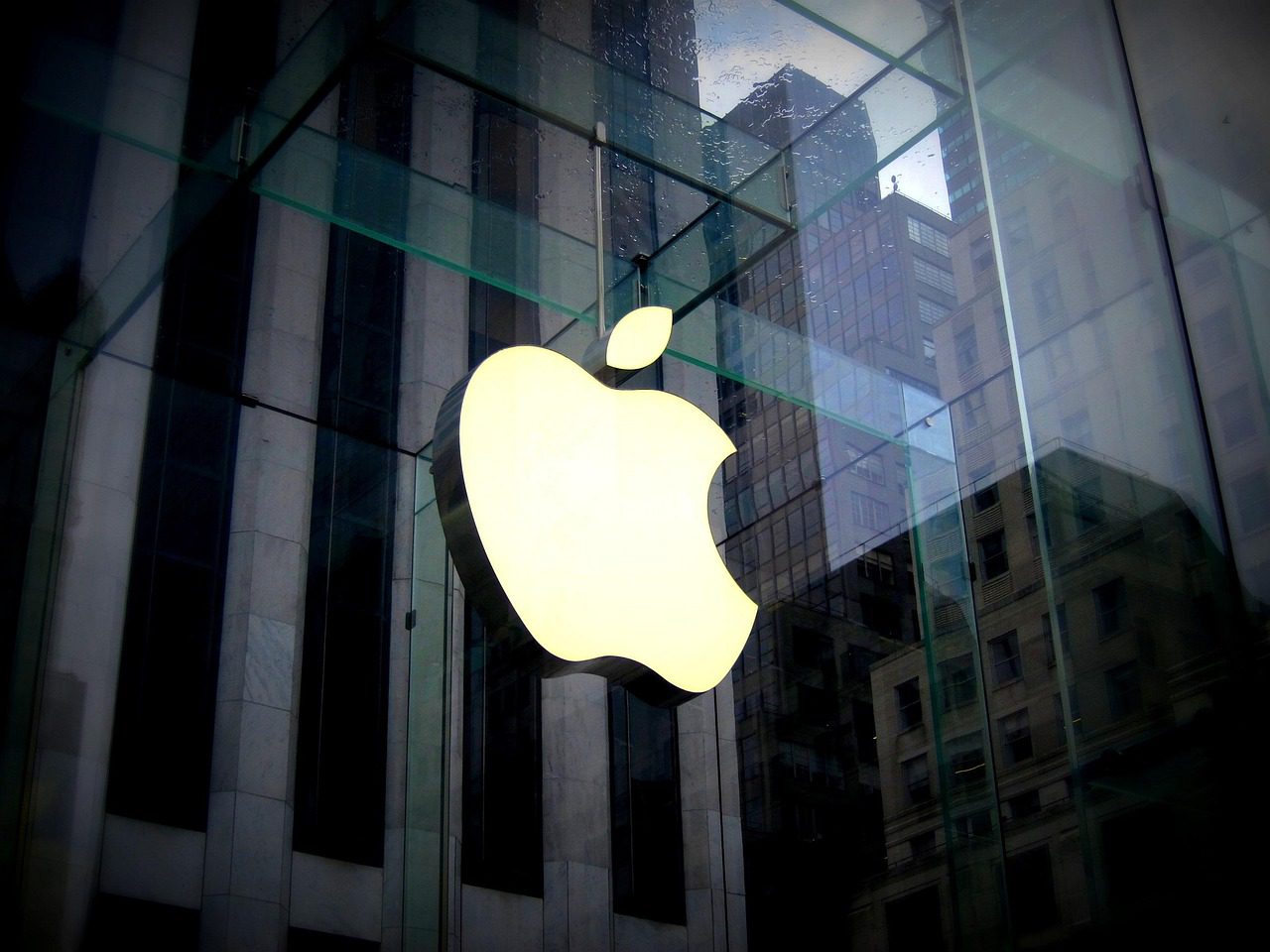
Apple Inc. – A Detailed Overview
Apple Inc. is one of the most powerful and well-known technology companies in the world. It is famous for its minimalistic designs, top-notch products, and innovative ideas. People around the world use Apple products on a daily basis — iPhones, iPads, MacBooks, and Apple Watches. It is headquartered in Cupertino, California, USA, and it has transformed how we integrate technology into our lives. Apple is not just a company but a mirror image of creativity, design, and technological superiority. Apple has made a loyal customer base and built a strong reputation over the decades. It is one of the richest and most prosperous companies on the planet. Here in this article, we will talk about the history of Apple, its products, innovations, business model, competitors, and how it became the number one technology company in the world.
History of Apple Inc.
Apple Inc. was founded on April 1, 1976, by three friends, Steve Jobs, Steve Wozniak, and Ronald Wayne. The three friends’ vision was to make computers small enough to be utilized by people at home or in the office. Computers were large and expensive at that time. They could be afforded only by universities or big companies. Wozniak assembled the first Apple computer in his garage, and Jobs helped to sell it. This small start soon developed into a revolution. Their first product was Apple I, which was a bare computer board with no keyboard or screen. However, it functioned suitably for programmers and hobbyists. In 1977, they introduced Apple II, which was a huge success. It was colorful, user-friendly, and widely used in homes and schools. In 1984, Apple introduced the Macintosh, the first PC to include a graphical user interface (GUI). People could now click on icons instead of typing commands. This idea changed the world of computers forever. However, in 1985, Steve Jobs left Apple after internal disagreements. Apple did not fare well for many years. Competitors like Microsoft gained traction, and Apple’s sales fell. In 1997, Apple purchased Jobs’s new company, NeXT, and invited him to return as CEO. His comeback was the start of Apple’s modern success. He came along with new ideas, bold marketing, and breathtaking designs.
The Rise of Apple’s Modern Era
Everything changed after Steve Jobs came back to Apple. In 1998, Apple launched the iMac, a futuristic, all-in-one computer available in a range of colors. It was simple to use, fashionable, and easy to install. It was a top seller and reinstated Apple’s reputation. This was followed by a series of innovative products. In 2001, Apple launched the iPod, a small music player that could store thousands of songs. The slogan “1,000 songs in your pocket” became famous all over the world. In 2003, Apple introduced the iTunes Store, where customers could legally purchase and download music. This changed the music industry. It was the beginning of a shift from CDs to digital music. But Apple’s biggest success came in 2007 with the release of the iPhone. It was a phone, an iPod, and an internet communications device all in one trendy product. Steve Jobs called it “a revolutionary product.”.
The iPhone transformed how humans use mobile phones. Touchscreen interaction, apps, and internet on the phone became everyday commodities. The App Store, launched in 2008, gave developers a platform to sell apps and games. Then came the iPad in 2010, a tablet computer for work and play. Apple later launched the Apple Watch in 2015 and the AirPods in 2016. With each device came another dimension to Apple’s ecosystem.
Apple’s Ecosystem
Apple’s strength lies in its ecosystem — a group of products that all work well together. As an example, it is possible to use an iPhone, MacBook, Apple Watch, and iCloud all at once. When one takes a picture using their iPhone, it automatically appears on their Mac or iPad through iCloud. When they get a call, they can answer it on their Mac. Such integration keeps individuals loyal to Apple. Apple also offers the following digital services:
- Apple Music to stream music, Apple TV+ for movies and TV, Apple Arcade for gaming, iCloud for storage, Apple Pay to make online payments
All these services are transforming Apple into more than a hardware company. They are retaining people in the Apple ecosystem for years.
Apple’s Product Line
Apple has a line of products that cater to almost every need:
iPhone
iPhone is the most used Apple product. It has a simple design, strong software, and good cameras. Apple releases a new iPhone annually with additional features. The iPhone is a combination of style, security, and speed.
Mac Computers
Mac line includes MacBook Air, MacBook Pro, iMac, Mac mini, and Mac Studio. They are long-lasting computers with a seamless running experience. Apple’s newest M1 and M2 chips have further increased the speed and power efficiency of Macs.
iPad
The iPad is a thin and lightweight tablet used for work, drawing, reading, and movie watching. It comes in different models, such as iPad Mini, iPad Air, and iPad Pro.
Apple Watch
Apple Watch is a smart fitness and health device. It can monitor heart rate, sleep, oxygen level, and even falls. It also syncs with iPhones for notifications and calls.
AirPods
They are tiny, stylish wireless earphones. They offer great sound and pair instantly with other Apple devices.
Apple TV
Apple TV and Apple TV+ bring entertainment to the living room. The customer can watch movies, TV shows, and sports in high definition.
Design and Innovation
Apple is famous for its design philosophy — “simplicity is beauty.” All its products are minimal, clean, and simple to use. Its now late founder Steve Jobs believed that great design is not just how it looks, but also how it works. Apple’s design group, led for so long by Jony Ive, focused on rounded corners, pastel colors, and simple-to-use interfaces. Apple uses materials like glass and aluminum to give its products a premium feel. Innovation is also a key part of Apple’s identity. Apple has introduced many firsts to the marketplace:
- The mouse and GUI with Macintosh, The touchscreen smartphone with iPhone, The App Store model for mobile apps, The Face ID and Touch ID security features, The internally developed M-series chips
Apple’s blend of technology and art is what sets it apart in the competitive market.
Apple’s Business Model
Apple’s business model depends on high-end products with greater prices and delivering excellent quality and customer experience. Apple also makes money from services like subscriptions and digital content. Its business model is based on four pillars:
- Innovation – coming up with new technologies.
- Integration – integrating products within a single system.
- Branding – establishing trust and emotional bond.
- Experience – delivering great customer service and good packaging.
Apple Stores worldwide are an essential element in this plan. The stores are well-lit, clean, and designed to let individuals experience the products. Apple employees are well-trained and friendly, helping customers pick the right device.
Apple’s Marketing and Branding
Apple’s marketing is some of the world’s best. Apple uses simple but emotional advertising. Their messages are brief and direct. They always focus on how Apple technology improves people’s lives. Their slogans, like “Think Different”, “Shot on iPhone”, and “It Just Works”, really connect with customers. Apple never talks about technical details in advertising. Instead, it shows people creating, exploring, and connecting using technology. Apple logo, a bitten apple, is recognized everywhere in the world. It has come to represent innovation, knowledge, and creativity.
What you can visit
The Cupertino, California-based Apple Park Visitor Center is open to the public. It is located beside Apple’s main campus. The Visitor Center has an exhibit space, store with unique merchandise, cafe, and rooftop deck with views of the Apple campus.
Note: The main Apple campus building (the “spaceship” ring) is not open for general-public tours.
Apple’s Competitors
Apple faces strong competition in the global market. They are Samsung, Google, Microsoft, and Huawei. Let us talk about them in detail.
Samsung
South Korea’s Samsung is Apple’s biggest rival in smartphones. Samsung produces a wide range of phones, from low-end to high-end. Samsung’s Galaxy S and Galaxy Z Fold series directly compete with iPhones. Samsung also produces TVs, laptops, and wearables. Samsung is known for its display technology and high production volume. Samsung offers greater choice and lower prices, while Apple focuses on luxury and ecosystem quality.
Google
Google, the creator of Android OS, is another giant. Apple’s iOS and Google’s Android dominate the smartphone market. Google also produces hardware like Pixel phones, Chromebooks, and Nest home devices. Google competes with Apple in services too — Google Play Store, Google Drive, YouTube, and Google Music are rivals to Apple’s ecosystem. But Google is all about open systems, while Apple is closed and secure.
Microsoft
Microsoft and Apple have been rivals since the 1980s. Microsoft’s Windows dominates PCs, and Apple’s macOS serves creative professionals. Microsoft also rivalry with its Surface line, Xbox gaming, and Cloud computing (Azure). However, in hardware and design, Apple still has a unique advantage.
Huawei
Huawei, from China, became a serious smartphone maker in the 2010s. Its smartphones, like the Mate and P series, are equal to the iPhone in performance and camera quality. But due to U.S. trade restrictions, Huawei struggled to utilize Google services and chips. However, it continues to thrive in Europe and Asia.
Other Players
There are also competitors like Xiaomi, Oppo, Vivo, and OnePlus that contest the mid-range smartphone market. They are popular among the youth with low costs and trendy designs.
Apple’s Environmental and Social Efforts
Apple is committed to protecting the environment. It uses recycled materials, renewable energy, and eco-friendly packaging. Apple aims to be 100% carbon neutral by 2030. Apple also focuses on human rights, supplier responsibility, and privacy. Apple ensures safe working conditions and forbids child labor in factories. Apple’s privacy policies — including App Tracking Transparency and Face ID security — reflect its consideration of user data.
Financial Growth and Global Impact
Apple first reached a $3 trillion market capitalization in 2022. It makes the majority of its income from selling iPhones, but wearables and services are growing quickly. It operates more than 500 retail stores in over 25 countries and sells products online worldwide. Apple has influenced industries like music, entertainment, education, and healthcare with its success. Its offerings are used in schools, hospitals, and workplaces worldwide. Other businesses follow Apple’s service and design models.
Challenges and Criticism
Even a giant like Apple has issues. The greatest ones are:
- High price, which lowers affordability. Competition from cheap Android phones. Dependence on iPhone sales for most revenue
- Supply chain disruption during worldwide crises. Regulatory pressure over App Store policies
Apple is also faulted for limiting customization and over-controlling its software ecosystem. However, most users prefer Apple’s secure and stable system.
The Future of Apple
Apple’s future looks bright. Apple is making forays into emerging technologies such as Artificial Intelligence (AI), Augmented Reality (AR), and Electric Vehicles (EVs). Its Vision Pro headset, launched in 2024, introduces spatial computing — a blend of the real and digital worlds. Apple also brings health features to its watches and develops advanced processors. The company’s ultimate goal is to create technology that enhances human existence while protecting privacy and the planet.
Conclusion
Apple Inc. started in a small garage but grew to become one of the biggest and most admired companies in the world. Its past is filled with innovation, creativity, and determination. Apple has revolutionized how people use technology, from the first Macintosh to the latest iPhone. Its products connect billions of users, its services shape industries, and its competitors push it to stay inventive. In design, in software, in sustainability — Apple continues to set global benchmarks. Apple today is not just a tech company but a cultural phenomenon — inspiring millions to “Think Different.


